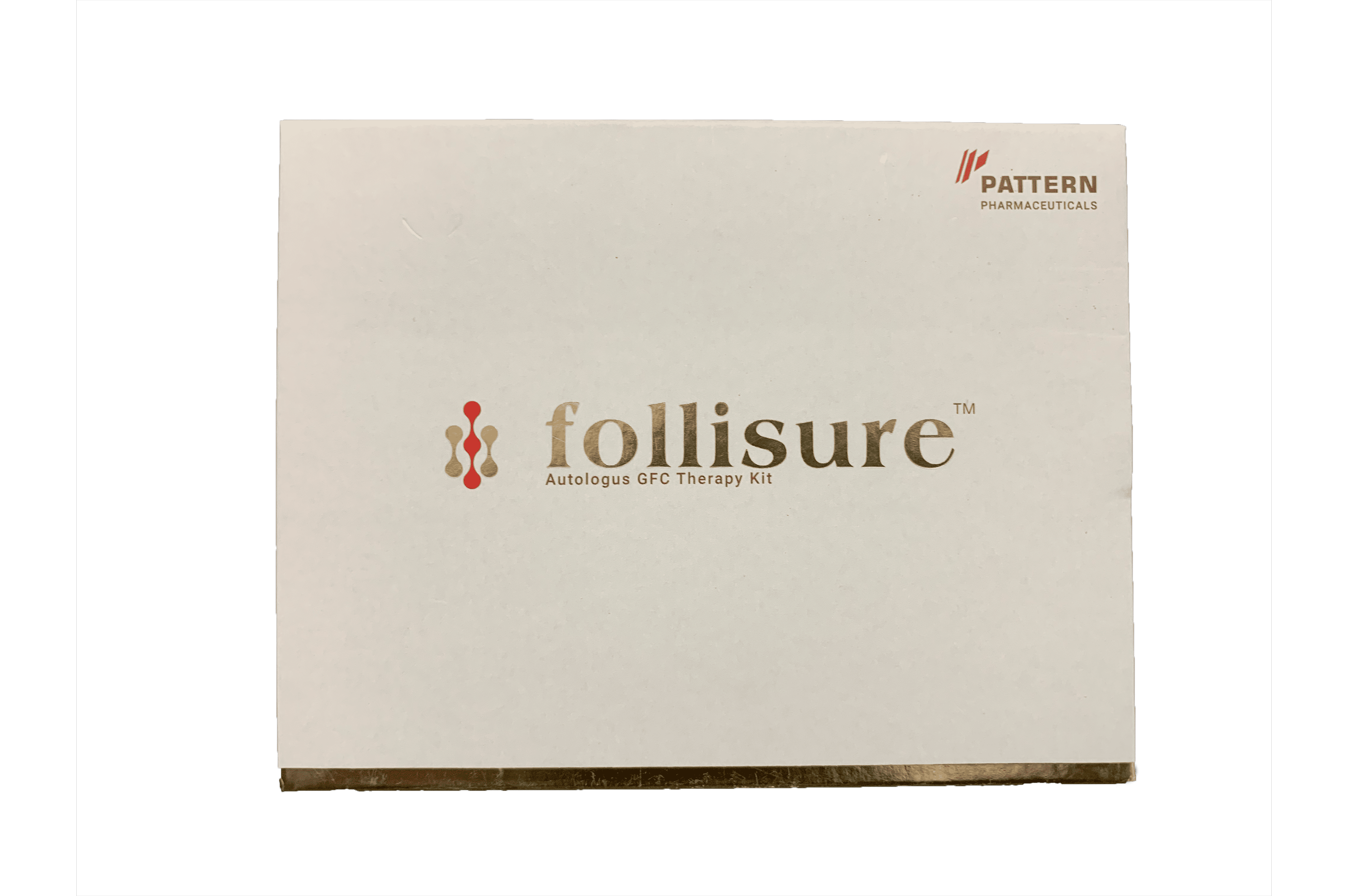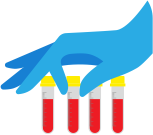Hair loss
Hair loss is a common condition impacting millions globally, affecting both men and women. Studies reveal that by the age of fifty, approximately 85% of men and 50% of women experience significant hair thinning. The most prevalent form of hair loss in men is androgenetic alopecia, accounting for about 95% of cases. Genetics play a crucial role, but other factors like diet, stress, and lifestyle also contribute.
In women, hair loss can be particularly distressing and may lead to emotional and social distress. Treatments vary, from medications to hair transplant and regenerative medicines were the options to treat with. It’s important for those experiencing hair loss to consult healthcare professionals to understand the underlying causes and effective treatments.
What’s Behind Hair Fall?
Age
Genetics
Stress
Hormonal Changes
Medical Conditions
Nutritional Deficiency
Hairstyles and Treatments
Infections
Drug side effects
Age and Natural Hair Thinning
Genetics and Inherited Hair Loss
Stress and Hair Fall
Hormonal Changes and Hair Loss
Medical Conditions and Their Impact on Hair
Nutritional Deficiency and Its Effect on Hair Health
Hairstyles, Treatments, and Scalp Damage
Infections and Scalp Conditions
Drug Side Effects and Hair Loss
Age and Natural Hair Thinning 🧓
Genetics and Inherited Hair Loss 🧬
Genetics plays a crucial role in determining hair loss patterns. If you have a family history of hair thinning or baldness, you're more likely to experience it as well. Androgenetic alopecia, also known as male or female pattern baldness, is the most common form of hair loss influenced by genetics. This hereditary condition can cause hair thinning on the scalp, and it typically starts around the age of 20 to 30 for men, while women may notice changes after menopause. The genes inherited from both sides of the family can determine the onset and extent of hair loss.
Stress and Hair Fall 😰
Stress, both emotional and physical, can have a significant impact on your hair. When the body is under stress, it may trigger a condition called telogen effluvium, which causes hair follicles to prematurely enter the resting phase. This leads to shedding, often noticeable about three months after a stressful event. Chronic stress can also worsen other underlying conditions like hormonal imbalances and nutritional deficiencies, exacerbating hair loss. Managing stress through relaxation techniques such as yoga, meditation, and regular exercise can help minimize its effects on your hair.
Hormonal Changes and Hair Loss ⚖️
Hormonal fluctuations are a significant contributor to hair fall. Changes in hormone levels can occur during various life stages, such as pregnancy, childbirth, menopause, or due to conditions like thyroid imbalances. In women, pregnancy and postpartum can cause significant hair shedding, often referred to as "postpartum alopecia." Polycystic ovary syndrome (PCOS), a hormonal disorder, can also lead to thinning hair. In men, testosterone and dihydrotestosterone (DHT) levels can cause hair follicles to shrink, resulting in male pattern baldness.
Medical Conditions and Their Impact on Hair 🏥
Several underlying medical conditions can lead to hair loss, such as autoimmune diseases like alopecia areata, where the immune system attacks hair follicles. Thyroid disorders (both hypothyroidism and hyperthyroidism) can disrupt the hair growth cycle and cause hair thinning. Conditions like lupus, diabetes, iron deficiency, and anemia may also contribute to hair loss. Chronic illnesses and their treatments, such as chemotherapy, can cause temporary or permanent hair loss. If hair loss is linked to a medical condition, addressing the condition with proper treatment can help restore hair health.
Nutritional Deficiency and Its Effect on Hair Health 🥦
A lack of essential nutrients can weaken the hair and cause excessive shedding. Deficiencies in iron, vitamin D, zinc, biotin, vitamin B12, and protein can all negatively affect hair growth. Iron deficiency anemia, in particular, is one of the most common causes of hair loss in women, leading to brittle hair and hair thinning. A balanced diet rich in vitamins, minerals, and protein is essential for healthy hair. Adding iron-rich foods like spinach and red meat, along with biotin-rich foods such as eggs and nuts, can support hair health.
Hairstyles, Treatments, and Scalp Damage 💇♂️
Certain hairstyles and hair treatments can cause hair to break or fall out. Tight hairstyles, such as ponytails, braids, or buns, can lead to a condition called traction alopecia, where hair is pulled out from the roots. Similarly, excessive use of chemical treatments like coloring, perming, or straightening can weaken hair and cause it to break. Heat styling tools, such as flat irons, curling irons, and blow dryers, can also damage the hair cuticle. It's essential to give your hair regular breaks from these treatments and use nourishing products to maintain its health.
Infections and Scalp Conditions 🦠
Scalp infections, such as fungal infections (ringworm) and bacterial infections, can disrupt the hair follicles and lead to hair loss. Tinea capitis, a fungal infection, is a common cause of hair loss in children but can also affect adults. Folliculitis, caused by bacteria, can also result in scarring and permanent hair loss. Poor scalp hygiene or sharing personal items like combs and hats can increase the risk of infections. Regular scalp cleaning and using anti-fungal or antibacterial treatments can help prevent infections and keep your scalp healthy.
Drug Side Effects and Hair Loss 💊
Certain medications can have side effects that contribute to hair loss. Common drugs linked to hair thinning include chemotherapy drugs, blood thinners, antidepressants, beta-blockers, and anti-inflammatory drugs. Retinoids and some birth control pills can also cause changes in hair growth. If you suspect that a medication is causing hair loss, it's important to consult with a healthcare provider. In some cases, switching to a different medication or adjusting the dosage can alleviate the issue.
Symptoms of Hair Loss
Thinning Hair and Gradual Decrease in Volume
Bald Spots and Patchy Hair Loss
Excessive Shedding of Hair
Scalp Issues and Sensitivity
Itching and Irritation of the Scalp
Lesions or Sores on the Scalp
Receding Hairline (M Shape)
Thinning Hair and Gradual Decrease in Volume 🌿
Thinning hair is one of the most common symptoms of hair loss. It occurs when the hair gradually becomes finer and less dense. Over time, the scalp may become more visible due to a reduction in hair density. This can be caused by genetics, hormonal changes, or stress, and it typically affects the crown or top of the head.
Bald Spots and Patchy Hair Loss 🕳️
Bald spots refer to areas of the scalp where hair has completely fallen out, often in circular patches. This can be a sign of conditions such as alopecia areata, an autoimmune disorder that causes the body’s immune system to attack hair follicles. Bald spots may also occur due to infections or scarring conditions like scarring alopecia.
Excessive Shedding of Hair 🍂
Excessive hair shedding is when you notice more hair falling out than usual, often during brushing, showering, or combing. Normally, we lose about 50-100 hairs per day, but when the shedding exceeds this amount, it can be a sign of conditions such as telogen effluvium, a temporary shedding often triggered by stress, illness, or medication.
Scalp Issues and Sensitivity 🧴
Scalp issues like inflammation, irritation, or excessive dryness can contribute to hair loss. Conditions such as seborrheic dermatitis, psoriasis, and dandruff can cause itching, flaking, and redness on the scalp, which may lead to hair shedding. Additionally, an unhealthy scalp environment can weaken hair follicles, resulting in weaker hair growth.
Itching and Irritation of the Scalp 🤧
Itching and irritation are often signs of scalp conditions like dandruff, psoriasis, or fungal infections. Scratching the scalp frequently can damage hair follicles, leading to hair loss. Persistent itching may also indicate an allergic reaction to hair products or a scalp infection that needs medical attention.
Lesions or Sores on the Scalp 🩹
Lesions or sores on the scalp can be caused by conditions such as scalp psoriasis, ringworm, or other skin infections. These conditions can lead to inflammation, which damages hair follicles and hinders hair growth. If left untreated, the hair loss can become permanent, so it is crucial to seek medical help if lesions appear.
Receding Hairline (M Shape) 🏃♂️
A receding hairline is a common symptom of hair loss, particularly in men. It usually starts at the temples and moves backward, forming an ‘M’ shape. This pattern is a hallmark of male-pattern baldness, which is caused by the effects of dihydrotestosterone (DHT) on hair follicles. In women, a receding hairline may be less pronounced but still a sign of thinning hair.
Thinning
Bald Spots
Excessive shedding of hair
Scalp Issues
Itching
Lesions
Receding hair line (M Shape)


GFC (Growth Factor Concentrate) hair treatment promotes natural hair growth using your own blood-derived growth factors. Key benefits include:
Stimulates hair growth and improves density.
Safe, natural, and minimizes risk of allergic reactions.
Non-invasive with minimal downtime.
Enhances scalp health and circulation.
Effective for various hair loss conditions.
Long-lasting results with proper aftercare.
No chemicals involved.
It's a safe, natural, and effective option for treating hair thinning and promoting thicker hair.
How to prepare GFC
Step 1
Collection of Blood - Collect 15-16 ml of patient’s peripheral blood and distribute it in 4 GFC tubes equally
Step 2
Activation of Platelet & Release of GFs – Gently mix the blood by inverting tube for 6-10 times and allow tubes to stand for 30 mins (This activates platelets by Pattern’s proprietary platelet-activating solution present in tubes) This releases all GFs like PDGF, VEGF, EGF, IGF-1, from -granules present in platelet
Step 3
Separation of GFC - Centrifuge all 4 tubes at 3400 rpm for 10 min (300g). Please note that the tubes should be counter-balanced before centrifugation. This will separate pure GFs from rest of blood cells. (RBCs, WBCs etc.
Step 4
Collection of GFC - The autologous growth factor concentrate is then collected by inverting the tube to allow GFC to get collected at the cap of tube. Insert the needle of collecting syringe into the tube so that the tip of the needle is just under the cap of the tube, to allow maximum recovery of GFC
Step 5
Application of GFC - GFC (6-8 ml) thus collected is now ready to use. Normal colour of final GFC output can range from yellow-yellowish brown–orange to reddish. However colour range has no effect on quantity and viability of growt

Step 1 - Collection of Blood
Collect 15-16 ml of patient’s peripheral blood and distribute it in 4 GFC tubes equally.

Step 2 - Activation of Platelet & Release of GFs
Gently mix the blood by inverting tube for 6-10 times and allow tubes to stand for 30 mins (This activates platelets by Pattern’s proprietary platelet-activating solution present in tubes) This releases all GFs like PDGF, VEGF, EGF, IGF-1, from -granules present in platelet.

Step 3 - Separation of GFC
Centrifuge all 4 tubes at 3400 rpm for 10 min (300g). Please note that the tubes should be counter-balanced before centrifugation. This will separate pure GFs from rest of blood cells. (RBCs, WBCs etc.

Step 4 - Collection of GFC
The autologous growth factor concentrate is then collected by inverting the tube to allow GFC to get collected at the cap of tube. Insert the needle of collecting syringe into the tube so that the tip of the needle is just under the cap of the tube, to allow maximum recovery of GFC.

Step 5 - Application of GFC
GFC (6-8 ml) thus collected is now ready to use. Normal colour of final GFC output can range from yellow-yellowish brown–orange to reddish. However colour range has no effect on quantity and viability of growth.
Contact Us?
Address:
Kailash Tower, Vasai Link Road, Vasai Virar , Palghar, Maharashtra PIN 401209.
